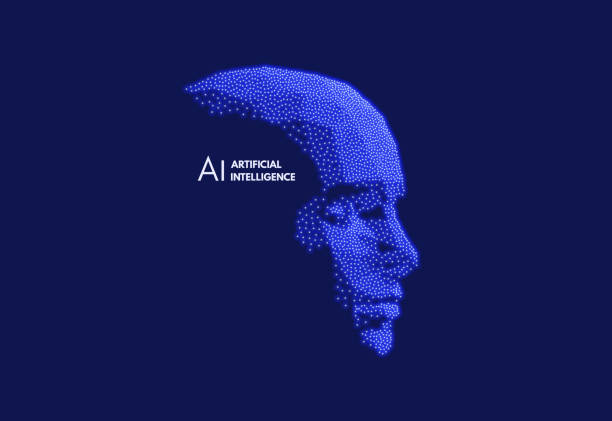Contents
Why AI in Banks? Why Now?
The banking sector is one of the most important and rapidly changing areas in the world. Banks have started to use artificial intelligence (AI) to improve customer service, increase efficiency, and reduce costs. AI can help banks automate customer service tasks, identify fraud quickly, and understand customer needs more accurately.
AI can also be used to improve asset allocation decisions by providing insights on risk management and analytics. By leveraging AI in their operations, banks can stay ahead of their competitors in the ever-evolving banking landscape. As such, it is no surprise that many large banks are investing heavily in AI technologies such as machine learning and natural language processing to remain competitive.
Artificial Intelligence (AI) is revolutionizing the banking sector, bringing new opportunities and challenges. AI is being used to automate mundane tasks such as customer service, loan processing and fraud detection, while also helping banks provide better customer experience.
AI in banks has become necessary due to the high competition in the banking industry.
Banks are looking for ways to increase efficiency and cost savings while providing better services. AI provides an opportunity for this by automating complex tasks, improving customer experience and reducing manual errors.
Additionally, it can help banks improve their risk management capabilities by detecting fraudulent activities faster than humans. This is why AI in banks has become a necessity now- more than ever before.
Also Read: Role of Digital Transformation in Banking Sector with its Importance, Future, and Benefits
What are the drivers of AI disruption in Banking?
- The explosion of Data (Big Data): The explosion of the big data market has had a major impact on the Banking industry due to the changing expectations of customers. Customers now interact with their banks on a more digital level, and in addition to the traditional structured data e.g. transactional data, organization nowadays collect large volumes of unstructured data such as emails, text and voice messages, images and videos via their customer service, social media platforms and other mediums of data collection.
- Availability of infrastructure (Fast computers, hardware, software, Cloud): The explosion of cloud technology as well as high computational resources and infrastructure availability, allows for quick processing of large data at lower costs and efficiency in scalability
AI Applications in the banking sector
AI applications are increasingly being used in the banking sector to help banks become more efficient, secure and customer-oriented. AI-powered technologies such as machine learning and natural language processing are being used for tasks like fraud detection, automated customer service, automated loan process and asset management.
These AI applications can provide a better understanding of consumer needs and preferences which helps banks to better target their services. AI applications also help banks identify suspicious activities quicker and increase accuracy in financial analysis.
The following are some use cases where AI has been most impactful within the BFSI industry.
- Chatbots: AI chatbots are becoming increasingly popular in the banking sector. Banks are using chatbots to provide customers with a more convenient and personalized experience. AI chatbots can do tasks such as providing answers to frequently asked questions, processing customer service requests, giving product information, and providing guidance for financial decisions. Chatbots can also be used for automated customer support by providing customers with real-time assistance when they need help or have a question.
AI chatbots in the banking sector offer a great opportunity to banks and their customers alike. By offering automated services, banks can reduce the time their employees spend on mundane tasks while improving customer satisfaction at the same time. With AI technology, banks can also offer better services to their customers by having more efficient conversations with them and better understanding their needs.
- Fraud Detection & Prevention: Until very recently, banks have relied on traditional, rule-based Anti-Money Laundering (AML) transaction monitoring and name screening systems which generate a high number of false positives. With the alarming increase in fraud-related crimes and ever-changing fraud patterns, enhanced AI components are being added to the existing systems to enable the identification of previously undetected transactional patterns, data anomalies and suspicious relationships between individuals and entities.
This allows for a more proactive approach, where AI is used to prevent fraud before it happens as opposed to the traditional reactive approach to fraud detection.
- Customer Relationship Management: Customer relationship management is an important factor for banks. Banks are now providing more personalized 24/7 services to individual customers such as providing facial recognition and voice command features to log in to financial apps.
Banks are also leveraging Artificial Intelligence to analyze customer behavioral patterns and automatically perform customer segmentation which allows for targeted marketing and improved customer experience and interaction.
- Predictive Analytics: Predictive analytics is a rapidly growing field in the banking sector. It is used to predict future customer behavior and provide banks with insights that can help them make better decisions. By applying predictive analytics, banks can identify potential customers and target them with more personalized offers. Banks can also use predictive analytics to better manage customer relationships and improve customer service by predicting customer needs. Predictive analytics also provides banks with a better understanding of the financial health of their customers in order to make informed decisions about how to manage their finances.
Why must banking sector embrace the AI-first world?
The banking sector is on the cusp of a major transformation, and Artificial Intelligence (AI) is at the forefront of this change. AI has already been embraced by many other industries and banking is now starting to recognize its potential.
AI-driven solutions can help banks to improve customer experience, reduce costs, and increase efficiency in operations. With AI, banks can gain insights from customer data to create personalized experiences that will increase customer loyalty.
Additionally, AI can be used to automate mundane tasks such as compliance checks and fraud detection which will free up staff for more valuable tasks. Banks that embrace an AI-first approach will be well placed to stay ahead of the competition in the future.
The Future Implications of AI in Banking and Finance
The banking and finance sectors are increasingly utilizing AI technologies such as machine learning, natural language processing, and robotics to streamline operations and improve customer experience.
AI-driven automation is reducing the time required for mundane tasks like filling forms, verifying identities, managing compliance regulations etc. which can help in cost savings of up to 25%. AI-based chatbots are also being used to provide personalized customer service.
In addition to this, using AI in the financial markets can help banks identify frauds before they occur. Moreover, financial institutions are using predictive analytics to anticipate market trends which could potentially lead to better investment decisions. This shows that the potential implications of AI in banking and finance is immense and will only increase with time.
AI technology is revolutionizing the banking and finance industry. AI-driven tools are being used to automate processes, analyze data, and enhance customer experience. AI is being used for risk management, fraud detection, financial forecasting, portfolio management, online customer service and more.
The use of AI in the banking and finance sector will bring about a number of benefits including improved efficiency and accuracy in decision making. It will also reduce costs associated with manual operations.
By leveraging AI technologies such as machine learning and natural language processing, banks can provide more personalized services to customers while improving their overall experience.
AI has already started reshaping the banking industry by enabling banks to better understand their customers’ needs and provide them with tailored solutions that meet their specific requirements. As AI continues to evolve, it is expected to have a positive impact on the financial sector by bringing greater speed and agility in operations while helping banks remain competitive in an ever-changing market environment.
The challenges of AI in banking and finance
The banking and finance industry is under pressure to keep up with the ever-changing landscape of technology. One of the most significant disruptors in recent years has been artificial intelligence (AI).
Banks and financial institutions have started to experiment with AI in a number of areas, including customer service, fraud detection, and investment management. However, there are still many challenges that need to be addressed before AI can be fully integrated into the banking and finance sector.
One of the biggest challenges is data privacy. Banks hold a lot of sensitive customer data, which needs to be protected. When using AI, this data needs to be shared with third-party providers in order for the algorithms to be trained.
This raises concerns about who will have access to this data and how it will be used. There are also regulatory concerns around the use of AI in banking and finance. For example, if a bank is using AI to make lending decisions, there could be fears about biased decision-making.
There also needs to be transparency around how AI systems make decisions so that customers can understand why they were given a particular loan or investment opportunity.
The verdict
To sum it all up, the future of AI in banking and finance is shrouded in potential but fraught with uncertainty. But despite the challenges, it’s clear that AI will play an increasingly important role in the industry, changing the way we bank and manage our finances.
With that in mind, it’s crucial that we stay ahead of the curve and continue to educate ourselves on the latest developments in AI so that we can make the most of its potential.
Indepth Research Institute(IRES) is continually working on building global digital trust system for banks. With the amalgamation of Artificial Intelligence in Banking Sector and Machine Learning, they are continually working on the betterment of digital video verification in the KYC processes & Artificial Intelligence.
We have a firm belief that every organization has a unique purpose only they can fulfil in this world. We work with you in organizing your resources to exploit opportunities so that you can fulfil your purpose and realize full potential. We build the capacity of people, processes and systems for organizational success and growth as well as nurturing a thriving ecosystem.
Ready to enhance your skills and boost your career? Explore our corporate training programs now and start your journey to success.











Comment here